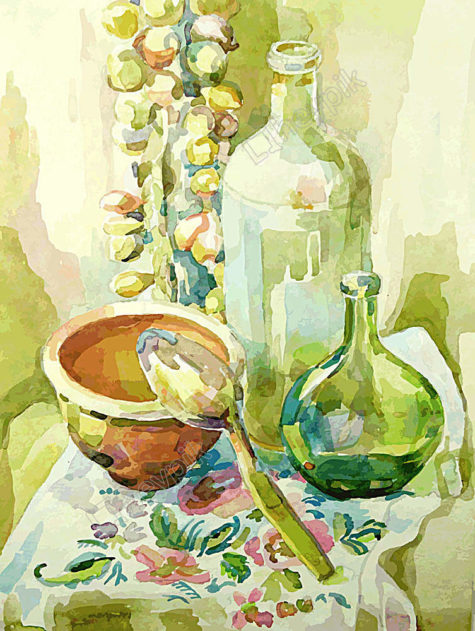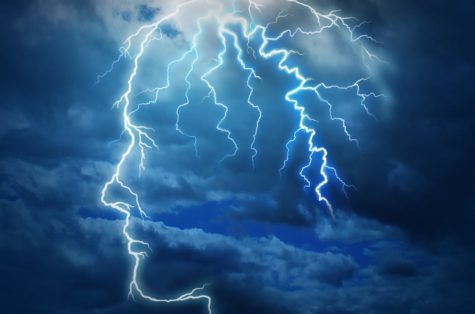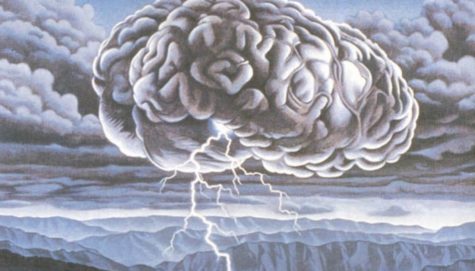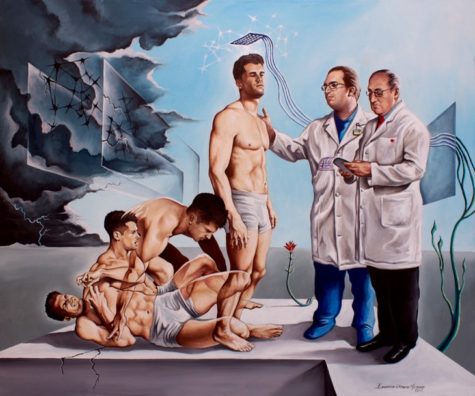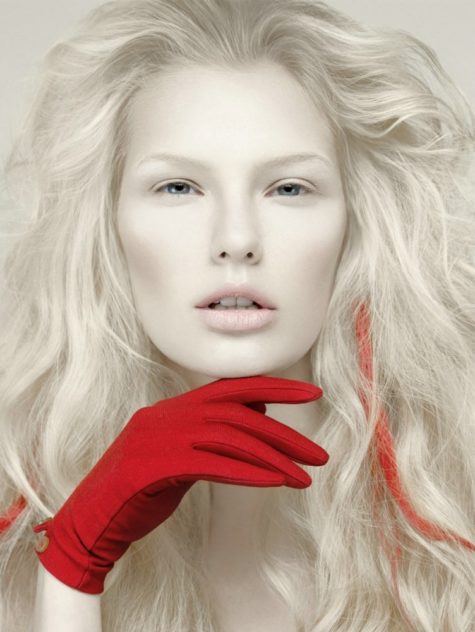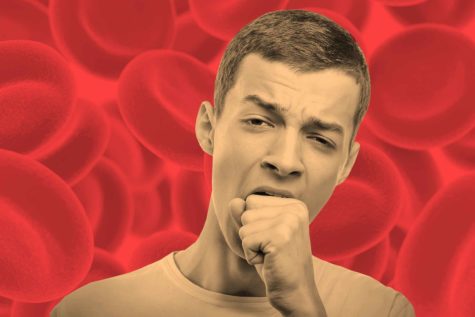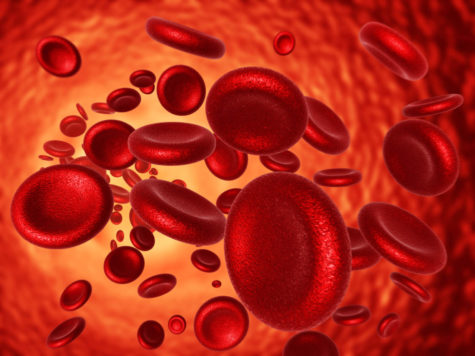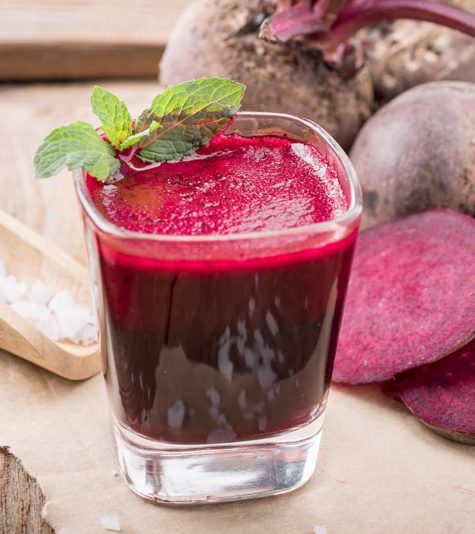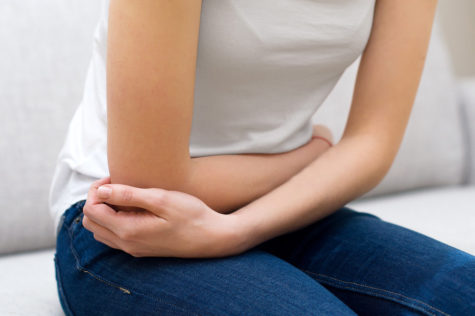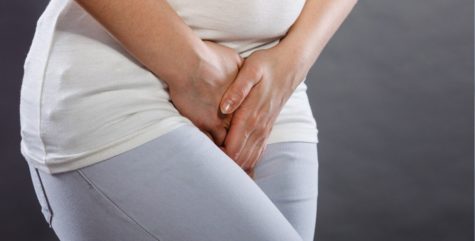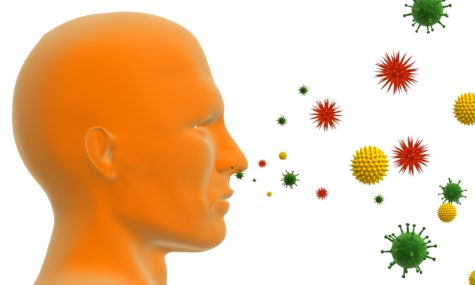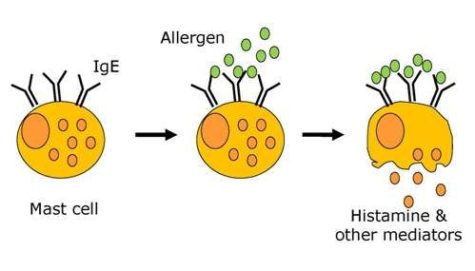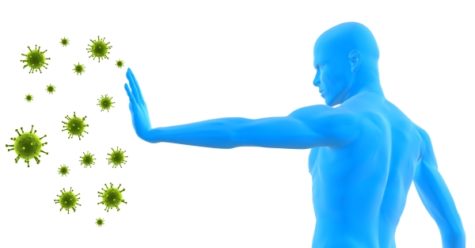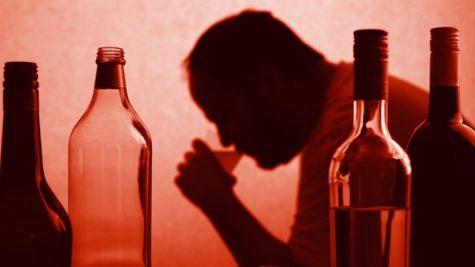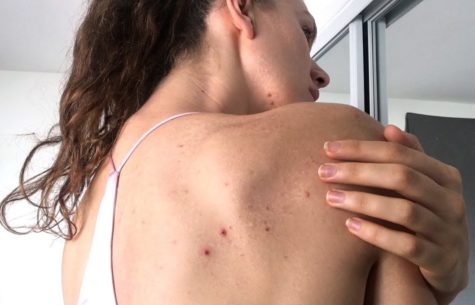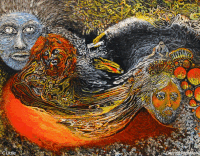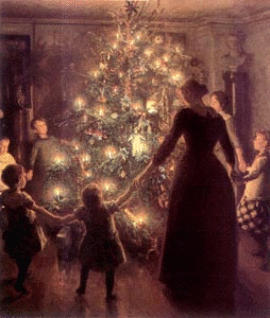Naturopathy
About Healing By Medicine
Very often it happens that a healer or believer in healing goes to such an extreme that he does not accept healing by medicine.
In reality, the thought of being given medicine by a doctor and the thought of repeating the treatment he has prescribed so many times a day, apart from its medicinal influence, is psychically helpful. And the healers of the East, considering this, have to a certain extent played the part of a physician also. With their healing power, spiritual, psychic, and magnetic, with their hypnotic suggestion and with their mesmeric influence, they gave the patient something to eat or to drink in the form of medicine. Sometimes they gave a charm to keep by him and sometimes magnetized water.
The idea is that man is more conscious of the objective world and its activity than of any other plane of existence, and by eating or drinking, or by holding or possessing a certain thing the impression upon him becomes more real. The thought of the healer, which should ease the mind, is often hindered when the external senses of the patient are not fully responsive to it. But when the patient eats or drinks something, or tastes something, or feels something applied to or touching the painful part, the senses become the medium for the healer’s thought to reach the mind of the patient.
Knowledge of the physical medium is most essential for a healer, for every psychic operation requires a medium, and through a distinct and responsive medium every psychical work meets with success.
Excerpt from: Healing and Mental Purification, Hazrat Inayat Khan
Nature Cure For Epilepsy
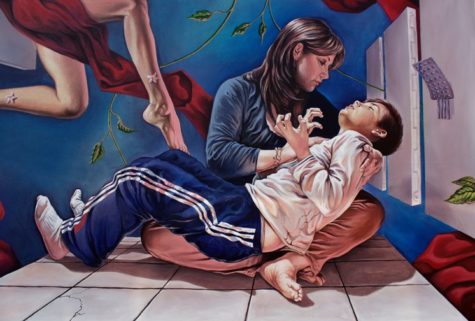
Epilepsy refers to a chronic condition in which repeated fits or attacks of unconsciousness occur with or without confusions. It is a serious disorder of a central nervous system. It occurs in both children and adults. Most attacks, however, occur in childhood and in early adult life. Attack rates show a progressive decline in frequency with age.
Epilepsy is a very ancient disease which afflicted some of the world’s greatest personalities, including Napoleon, Alexander and Julius Ceasar. The actual word ” epilepsy” comes from the Greek word which means ” to seize upon”. The ancient people believed that evil spirits entered the body of the person afflicted, seized upon his soul and threw his body into convulsions. The Greeks believed that the gods induced this disease. The early Christians blamed the devil for convulsions.
One of the main problems that a person with epilepsy has to face is continual uncertainty about whether or not he or she will have an attack on any particular occasion. Patients may find themselves increasingly inhibited from engaging in social events because of the understandable fear that they might embarrass themselves by having another attack. Such people also encounter difficulties in employments and other relationships.
Symptoms
Epilepsy is recognized by recurrent sudden attacks at irregular intervals. The patients twitch convulsively and fall unconscious to the ground during these attacks which cause tremendous nervous upheaval. There are two main types of epilepsy known as petit mal and grand mal. Each follows its own specific pattern.
In petit mal, which is a less serious form of epilepsy, an attack comes and goes within a few seconds. The patient has a momentary loss of consciousness, with no convulsions except sometimes a slight rigidity, or there may be slight attack of convulsions such as a jerk, or movement of the eyes, head trunk or extremities, with no perceptible loss of consciousness. The patient may not fall. He may suddenly stop what he is doing and then resume it when the attack is over, without even being aware of what has happened. Petit mal attacks may occur at any time in life but are most frequent in children.
The attack in case of grand mal comes with a dramatic effect. There are violent contractions of the arms, legs and body, accompanied by a sudden loss of consciousness. Before the onset of an attack, some patients have a warning or aura in the form of strange sensations such as a current of air or a stream of water flowing over a body, noises, odours and flashes of light.
In a typical attack, the patient cries out, falls to the ground loses consciousness and develops convulsions. With the convulsions may come foaming at the mouth, twitching of the muscles, biting of the tongue, distorted fixation of limbs, rotation of the head and deviation of the eyes. The patient may lose control of his urine and feces. The attack may last several minutes and is usually followed by a deep sleep. On waking up, he may remember nothing of what happened to him.
People who suffer from epilepsy are not abnormal in any other way. They usually know that fits can be triggered off by particular stimuli. Between epileptic attacks, their brain functions normally.
Causes
Epilepsy denotes electrical malfunctioning within the brain due to damage of brain cells or some inherited abnormality. There are many causes of epilepsy. Digestive disturbances, intestinal toxemia and a strained nervous condition are very often the main cause of petit mal. Grand mal usually results from hereditary influences, serious shock or injury to the brain or nervous system. Meningitis, typhoid, and other diseases attendant with prolonged high temperature can also lead to grand mal.
Epilepsy may be caused by several other factors. It may result from allergic reactions to certain food substances, especially some particular form of protein which is the main constituent of meat. Circulatory disorders such as hardening of arteries leading to the brain may also cause epileptic seizures. This type is rare and occurs only in very aged people. Chronic alcoholism, lead poisoning, cocaine and other such habits can also lead to this disease.
Other causes of epileptic seizure include mental conflict, deficient mineral assimilation, particularly of magnesium and calcium and wrong vitamin metabolism. According to some researchers, hypoglycemia or low blood sugar is also involved in most cases of epilepsy.
Treatment
In the natural form of treatment, the sufferer from epilepsy has to follow a rigorous regimen consisting of a strict dietary, complete relaxation and optimum exercise in the open air. He must adhere to a simple and correct natural life. He must assume a cheerful, optimistic attitude, refrain from mental and physical overwork and worry.
The most important aspect of the treatment is the diet. To begin with, the patient should be placed on an exclusive fruit diet for first few days. During this period he should have three meals a day of fresh juicy fruits such as oranges, apples, grapes, grapefruit, peaches, pears, pineapple and melon. Thereafter, he may gradually adopt a well balanced diet of three basic food groups viz:
- seeds, nuts and grains,
- vegetables and
- fruits
With emphasis on sprouted seeds such as alfalfa seeds and mung beans, raw vegetables and fruits. The diet should include a moderate amount of raw milk preferably goat’s milk and milk products such as raw butter and homemade cottage cheese.
The diet should eliminate completely all animal proteins, except milk, as they not only lack in magnesium, but also rob the body of its own magnesium storage as well as of vitamin B6. Both these substances are needed in large amounts by epileptics. The best food sources of magnesium are raw nuts, seeds, soyabeans , green leafy vegetables such as spinach, kale, beet-tops etc.
The patient should avoid all refined foods, fried and greasy food, sugar and products made with it, strong tea, coffee, alcoholic beverages, condiments and pickles. The patient should avoid over eating and take frequent small meals rather than a few large ones. He should not eat large meals before going to bed.
Mud packs on the abdomen twice daily help remove toxaemic conditions of the intestines and thereby hasten removal of epileptic conditions. The application of alternate hot and cold compresses to the base of the brain, that is at the back of the head will be beneficial. The procedure is to dip the feet in a bucket of hot water and apply first a hot towel and then a cold one to the base of the brain. The alternate hot and cold towels should be kept for two or three minutes about four times. The process shall be repeated twice every day.
Full Epsom-salt bath, twice a week are also beneficial. If the sufferer from epilepsy has taken strong drugs for many years, he should not leave off entirely all at once. The dosage may be cut to half to begin with and then gradually reduced further until it can be left off completely.
An epileptic should strictly observe all the natural laws of good health and build and maintain the highest level of general health. He should remain active mentally but avoid all severe mental and physical stress. And above all, he should avoid excitements of all kinds.
Nature Cure For Anemia
Anemia, which means ” lacking in blood “, is among the most common diseases affecting human beings. It denotes a shortage of rich red blood cells and coloring matter and usually results from consumption of refined foods.
The blood flowing in our veins and arteries is really living tissue. Nearly half of it consists of red blood cells which carry oxygen to the tissues. Approximately one trillion ( 10,000 million ) new blood cells are formed in the bone marrow daily. The raw materials required in the production of these cells are iron, proteins, and vitamins, especially folic acid and B12.
The red coloring matter, called haemoglobin is a protein which is composed of an organic iron-compound called “heme”. The globin is a sulphur -bearing protein which makes up 96 per cent of the molecule. The formation of hemoglobin thus depends on adequate dietary supplies of iron and protein.
Red cells have a lifespan of approximately 120 days and are destroyed and replaced daily. Each person should have 100 per cent hemoglobin or about 15 grams to 100 cc of blood, and a blood count of five million red cells per millimeter. A drop in the hemoglobin content results in Anemia and a consequent decreased ability of the blood to carry oxygen to the tissues.
Symptoms
A haggard look, with lines of strain, premature wrinkles, grayish skin, and dull and tired looking eyes are the main symptoms of Anemia. Other symptoms include poor memory, weakness, dizziness, fatigue, lack of energy, shortness of breath on exertion, slow healing of wounds, headaches, mental depression, pale fingers, lips and ear lobes. The patient usually complaints of weakness, easy fatigue, lack of energy and dizziness.
Causes
There are two principal causes of Anemia. It can result from reduced or low formation of red blood cells either due to defects in the bone marrow or an inadequate intake of iron vitamins, and protein. Heavy loss of blood due to injury, bleeding piles and heavy menstruation may also cause Anemia.
A lack of digestive acid of hydrochloric acid needed for digestion of iron and proteins may also result in Anemia. Emotional strain, anxiety and worry usually interfere with the manufacture of hydrochloric acid in the body. Anemia can also be caused by a variety of drugs which destroy vitamin E or by others which inactivate the nutrients needed in building blood cells. Chronic diseases such as tuberculosis, when accompanied by hemorrhage, may also result in Anemia.
Other little-known causes of Anemia are intestinal parasites or worms. Hookworm, pinworms, round worms and tapeworms feed on the blood supply as well as on the vitamins. Twenty-five hookworms can consume fifteen grams of blood every 24 hours; a tapeworm can cause acute shortage of vitamin B12.
Symptoms of intestinal worms are itching at the rectum, restlessness at night with bad dreams, diarrhoea, foul breath, dark circles under the eyes and a constant desire for food. Garlic can help get rid of some types of intestinal parasites. Fresh papaya and grated raw carrot are also effective. After successful treatment for intestinal worms, perfect cleanliness should be observed to prevent recurrence.
The Cure
Anemia is much more easily prevented than corrected. A liberal intake of iron in the formative years can go a long way in preventing iron-deficiency Anemia. Diet is of the utmost importance in the treatment of Anemia. Almost every nutrient is needed for the production of red blood cells, hemoglobin and the enzymes, required for their synthesis.
Refined food like white bread, polished rice, sugar, and desserts rope the body of the much -needed iron. Iron should always be taken in its natural organic form as the use of inorganic can prove hazardous, destroying the protective vitamins and unsaturated fatty acids, causing serious liver damage and even miscarriage and delayed or premature births.
The common foods rich in natural organic iron are wheat and wheat grain cereals, brown rice and rice polishings, green leafy vegetables, cabbage, carrot, celery, beets, tomatoes, spinach; fruits like apples, berries, cherries, grapes, raisins, figs, dates, peaches, and eggs.
It has been proved that a generous intake of iron alone will not help in the regeneration of hemoglobin. The supplies of protein, too, should be adequate. The diet should, therefore, be adequate in proteins of high biological value such as those found in milk, cheese and eggs.
Copper is also essential for the utilization of iron in the building of hemoglobin. Vitamin B12 is a must for preventing or curing Anemia. This vitamin is usually found in animal protein and especially in organic meats like kidney and liver.
A heavy meat diet is often associated with a high hemoglobin and high red cell count, but it has its disadvantages. One cause of Anemia is intestinal putrefaction, which is primarily brought on by a high meat diet. Moreover, all meats are becoming increasingly dangerous due to widespread diseases in the animal kingdom. There are, however, other equally good alternative sources of vitamin B12 such as dairy products , like milk, eggs and cheese, peanuts. Wheat germ and soy beans also contain some B12.
Vegetarians should include sizable amounts of milk, milk products and eggs in their diet. For prevention of Anemia, it is essential to take the entire B-complex range which includes B12, as well as the natural foods mentioned above. Eating lacto-avo products, which are complete proteins, and which also contain vitamin B12 is good insurance against the disease. Brewer’s yeast is a good source of complete protein.
A liberal intake of ascorbic acid is necessary to facilitate absorption of iron. At least two helpings of citrus fruits and other ascorbic acid rich foods should be taken daily.
Mention must be made of beets which are extremely important in curing Anemia. Beet juice contains potassium, phosphorous, calcium, sulphur, iodine, iron, copper, carbohydrates, protein, fat, vitamins, B1, B2, niacin B6, C and vitamin P. With its high iron content, beet juice regenerates and reactivates the red blood cells, supplies the body with fresh oxygen and helps the normal function of vesicular breathing.
Treatment
A cold water bath is among the most valuable curative measures in Anemia. The patient should be given carefully graduated cold baths twice daily. Cold friction, hot Epsom salt bath for five to 10 minutes once a week and an occasional cabinet steam bath are also recommended.
Full sun baths are especially beneficial as sunlight stimulates the production of red cells. There are other important factors which are helpful in curing Anemia. Deep breathing and light exercise like walking and simple yoga asanas should be undertaken to tone up the system. Sarvangasana paschomittanasana, uttanpadasana and shavasana are recommended. Massage also helps to keep the blood level high.
Nature Cure For Cystitis
The term ‘Cystitis’ refers to ‘inflammation of the bladder’. It is a most common complaint in women. Escherichia coli infections are considered the primary culprit in cystitis. The female anatomy makes it more convenient for e.coli bacteria, which normally inhabit the colon., to travel from the rectum to the vagina, up the urethra and into the bladder.
This condition is rarely dangerous but it is generally a forerunner to more serious troubles. The recurrence of cystitis may in some cases be associated with kidney troubles. The kidney and bladder are the principal strikers in the urinary system. The kidneys are situated on the back of the abdomen, one on each side of the spine at about the level of the lowest rib. The bladder is situated in the lower abdomen, in the pelvis. The body is relieved of the greater part of the waste matter, resulting from the complex working of the whole body’s vital processes by means of these two organs.
Symptoms
Cystitis is characterized by symptoms which may cause great discomfort. The patient complains of frequency and burning on urination as well as an almost continual urge to void. There may be a feeling of pain in the pelvis and lower abdomen. The urine may become thick, dark and stingy. It may have an unpleasant smell and may contain blood or pus. The ‘scalding’ sensation on passing urine indicates that the inflammation has spread to the urethra.
Some pain in the lower back may also be felt in certain cases. In an acute stage there may be a rise in body temperature. In the chronic form of cystitis, the symptoms are similar but generally less several and without the rise in temperature. The persistence of the chronic form of the disease indicates a process of deterioration, almost invariably due to wrong treatment of the acute form by suppressive drugs.
Causes
Cystitis may result from infections in other parts adjacent to the bladder such as the kidneys, the urethra, and the vagina. Local irritation and inflammation of the bladder may be caused if urine is retained there for an unduly long time. It may also result from severe constipation. Continual draining of pus and germs from an infected kidney may injure the epithelial lining of the bladder.
Trouble may also arise from the presence of a stone in either bladder or kidney. Childbirth injuries and major surgical procedures within the pelvis may also lower the resistance of the bladder-wall and predispose to the development of the cystitis.
There is also the problem of new brides who sometimes suffer from so-called honeymoon cystitis. The bladder wall may become swollen and ulcerated so that the bladder cannot hold the normal amount of urine. Germs may then find their way into the bladder and bring about chemical changes in the urine. Calcium or lime may thus be deposited in the walls of the bladder, increasing the patient’s discomfort.
Treatment
At the onset of acute cystitis, it is essential to withhold all solid food immediately. If there is fever, the patient should fast either on water or tender coconut water for three or four days. If there is no fever, raw vegetable juices, especially carrot juice diluted with water, should be taken every two or three hours. By so doing the biochemical energy needed for digestion and metabolism of food is diverted to the process of eliminating toxins and promoting healing and repair.
It is advisable to rest and keep warm at this time. Pain can be relieved by immersing the pelvis in hot water or alternatively by applying heat to the abdomen, using a towel wrung out in hot water, covering it with dry towel to retain warmth. Care should be taken to avoid scalding. A little vegetable oil gently rubbed into the skin , will avoid too much reddening. This treatment may be continued for three or four days, by which time the inflammation should have subsided and the temperature returned to normal.
For the next two or three days, only ripe sub-acid fruits may be taken three or four times daily. These fruits may include grapes, pears, peaches, apples, and melon, as available. While the hot compresses are intended to relieve pain, the use of cold water compresses to the abdomen is most valuable, if correctly applied, in relieving pelvic congestion and increasing the activity of the skin. Care should, however, be taken to ensure that compresses do not cause chilling.
After the all-fruit diet, the patient may gradually embark upon a well-balanced diet, consisting of seeds, nuts and grains, vegetables and fruits. The patient should avoid refined carbohydrates and salt, both at table and in cooking. Salt disturbs the balance of electrolytes and tends to raise blood pressure, which is frequently already raised in kidney troubles.
The prescribed dietary should exclude meat, fish and poultry. They produce uric acid. Most cases of food poisoning and infections, which may lead to gastritis and colitis, are also caused by the flesh foods. In case of chronic cystitis, the patient should commence the treatment of strict adherence to the dietary program, designed to cleanse the blood and other tissues and at the same time provide a rich source of natural vitamins and minerals in balanced proportions.
The patient may adopt the following restricted diet for seven to ten days.
- Upon arising : A glass of unsweetened apple juice or carrot juice
- Breakfast : Fresh fruits, selected mainly from apple, pear, grapes, melon, peach and pineapple and a glass of buttermilk, sweetened with a little honey.
- Mid-morning : Tender coconut water.
- Lunch : A salad of raw vegetables such as carrot, beetroot and cabbage, mixed with curd and a tablespoon of honey. This may be followed by a ripe apple.
- Mid-afternoon : One cup of unsweetened grape juice.
- Dinner : A salad of green leafy vegetables and a fresh fruit, preferably a portion of melon sweetened with a teaspoon of honey.
- Before retiring : One glass of mixed raw carrot and beetroot juice.
After the restricted diet, the patient should gradually embark on a well-balanced diet , consisting of seed, nuts and grains, vegetables and fruits. Even after the recovery from the chronic condition, it will be advisable for the individual to live exclusively on vegetables or on tender coconut water or raw vegetable juices for a day or two, every month. The water treatment and other health building methods should , however, be continued to the greatest extent possible, so that the patient may stay cured.
Nature Cure For Allergies
An ‘allergy’ can be described as sensitiveness of the body to a substance which does not normally affect other persons. There are innumerable substances in the environment which can cause mild to violent reactions in many people. These reactions range from true allergies due to intolerance of certain foods and substances, to those resulting from pollution.
Allergic reactions may occur within a few minutes of the patient coming in contact with the allergen, or they may be delayed for several hours or even several days. Almost any part of the body can be affected by allergies. The portion of the body which is affected is called a shock organ. Common sites are the nose and eyes, the skin, chest, intestines and ears.
Allergic reactions are caused by a wide range of substances and conditions. These include pollen, dust, cosmetics and animal hair ; poisonous plants, serums, vaccines and drugs ; physical agents such as heat, cold and sunlight ; as well as a variety of foods. Among the numerous allergens in the food department, the more common ones are oranges, milk, eggs, wheat, fish, chocolates, cabbage, potatoes, tomatoes and strawberries.
Symptoms
The symptoms of allergy are as varied as the substances causing the reaction. These include recurring headache, migraine, dizziness, irritability, nervousness, depression, neuralgia, sneezing, conjunctivitis, diabetes, eczema, heart-burn, hay fever, indigestion, constipation, diarrhoea, gastric ulcer, asthma, overweight, high blood pressure, chest pain, heart attacks, a stuffy or runny nose, shortness of breath, swelling of the face and eyes, etc.
The same food can cause different symptoms in different people. Many allergies are multiple and may be caused by multiple allergens.
Causes
An allergy is an indication of lowered resistance and internal disharmony caused by dietetic errors and faulty style of living. It is believed that the major cause of allergy is feeding babies such foods as cereals, meat, corns, whole milk, etc. before they reach the age of 10 to 12 months. These foods cause allergic reactions as babies lack the proper enzymes needed for their digestion before that age. Babies should be breast-fed for at least eight months as this is nature’s way of providing all the required nutrients during this period.
Another important cause of allergy is today’s processed foods loaded with numerous chemical additives, many of which cause powerful reactions. An allergic condition can result from diet imbalances. There can be a breakdown in the body’s ability to handle sugar due to excessive intake of refined sugar and consequent blood sugar irregularities, or mineral and vitamin imbalances due to defective dietary patterns.
Emotional and psychological stress can also lead to allergies. According to Dr. Hans Salye, the world’s premier researcher on stress, allergic symptoms are often nothing more than body’s reaction to stress. A person can through chronic stress, become sensitive to common foods or commonplace substances like petrol fumes.
Treatment
There are various ways to tackle many of the allergic disturbances. First, the sources must be identified. This is a difficult but not impossible task. Second, once the sources are discovered, they should be avoided. Third, and most important, general health and resistance should be built up to establish immunity to them.
There are two methods to detect disturbing foods. The first method is the trial -and- error elimination diet. This automatically eliminates many hazards and foods. Keep to organic, untreated, unprocessed foods as far as possible and you will eliminate another set of hazards such as pesticides, various sprays and other poisons.
After having eliminated as many disturbing factors as possible, a self-search should be carried out to ascertain any suspicious symptoms from foods. It is advisable to try an eliminary diet, excluding suspected foods for two weeks until the cause is detected. Occasionally, by changing the brand or the type, you can find a food substitute that does not upset you.
Another way to detect the cause of allergy is by Dr. Coca’s “pulse test.” The method is as follows :
Check your pulse before a meal. Then limiting that meal to one food only, wait for half an hour after eating and take your pulse again. A slight increase is considered normal, even up to 16 extra beats. If your pulse does not rise above 84, you may be allergy-free. But if your pulse rises beyond that point, and remains high an hour after the meal, you have found your food allergy.
The best way, however, to prevent or overcome allergies is to strengthen the overall physical resistance so as not to fall an easy prey to every allergen that comes along.
To start with, the patient should fast on fresh fruit juices for four or five days. Repeated short juice fasts are likely to result in better tolerance to previous allergies. After the fruit juice fast, the patient can take a mono diet of vegetables or fruits such as carrots, grapes or apples, for one week. After that one more food is added to the mono diet. A week later the third food is added and so on. After four weeks, the protein foods can be introduced, one at a time.
In case an allergic reaction to a newly introduced food is noticed, it should be discontinued and a new food tried. In this way all real allergens can be eventually eliminated from the diet. The body requires a large alkaline reserve for its daily activity. The many emergencies of acid formation through the day from wrong foods, fatigue, mental stress and lack of sleep can be met by the competency of the alkaline reserves. Boosting the normal body reserve of alkalines by liberal use of alkaline- forming foods is essential for those suffering from allergies.
The foods which should be excluded from the diet are tea, coffee, chocolate, cola drinks, alcohol, sugar, sweets and foods containing sugar, refined cereals, meats, fish, chicken, tobacco, milk, cheese, butter, smoked, salted, pickled foods and foods containing any chemical additives, preservatives and flavoring.
These foods cause either toxic accumulations or over-stimulation of adrenal glands or strain on pancreatic enzymes production or disturb the blood sugar balance. For preventive purposes, the entire C complex vitamins – known as the bioflavonoids, are recommended. They gradually strengthen cell permeability to help immunise the body from various allergies, especially hay fever.
Often the addition B5 , or pantothenic acid brings great relief to allergy sufferers. Multiple allergies may result from poor adrenal gland functioning. In such cases liberal amounts of pantothenic acids help cure them, although the recovery will take several weeks.
An adequate intake of vitamin E is also beneficial as this vitamin possesses effective anti-allergic properties, as some studies have shown. An exciting remedy for allergy has been discovered by an Indian physician, Dr. Hement Pathak. He found that the use of five drops of castor oil in a little juice or water taken on an empty stomach in the morning, is highly beneficial for allergies in the intestinal tract, skin and nasal passages. Dr. Pathak, who is an expert in Chinese medicine, has reported numerous cases of allergic protection by this method.
For allergic conditions in which an element of stress is present, it is essential to employ such methods as relaxation, exercise, meditation and mind control. These methods will reduce or remove stress and thereby contribute towards the treatment of allergies. Yogic asanas like yogamudra ardhmatsyendrasana, sarvangasana, shavasana and anuloma-viloma , pranayama are also beneficial.
Nature Cure For Alcoholism
Alcoholism refers to addiction to alcohol. It is a chronic disorder, in which a person is unable to refrain from frequent and excess consumption of alcohol for physical or psychological reasons. The World Health Organization (WHO) has listed alcoholism as one of the three most deadly killer diseases of the 20th century.
Alcoholism is also one of the serious social problems. It often brings poverty and certain amount of crime and results in material unhappiness and broken homes. It also leads to numerous traffic accidents.
Alcohol is not a product found in nature. It results from decomposition and as such belongs to a family of poisons. Ethyl alcohol, the main intoxicating ingredient in wine, beer and distilled liquor is a toxic drug which depresses the brain and nervous system. Alcohol cannot be called a food for it enters the alimentary canal and is not changed or digested in any way. It is quickly absorbed in the bloodstream and then travels to every part of the body, adversely affecting vital organs like brain and liver.
Symptoms According to the WHO, “Alcoholics are those excessive drinkers whose dependence on alcohol has attained such a degree that it shows a noticeable mental disturbance or interference with their bodily or mental health, their interpersonal relations and their smooth social and economic functions, or who show the prodormal signs of such development. ”
Alcoholics have a puffy face with bloodshot eyes, a hoarse voice and a rapid pulse. They are suspicious, irritable and over-emotional. Vomiting, delirium, impaired judgement and disturbed sleep are some of the other symptoms. The chronic alcoholic, who would rather drink than eat, fails to get enough vitamins. The few vitamins acquired by him are drained out of his system in the process of burning the alcohol in his body. Vitamin deficiency can lead to delirium tremors, convulsions, nutritious, disorders of the eyes and impaired memory.
Excessive drinking often causes premature graying of hair due to vitamin deficiency. Chronic alcoholism results in a depletion of minerals in the body, particularly magnesium. Its lack produces symptoms like tremor of the hands, feet and tongue, convulsions, mental clouding, and perspiration.
Excessive drinking imposes a strain on the liver. It gradually destroys its functions and often causes cirrhosis of the liver. It leads to disorders of the stomach and bowels. It can cause brain damage as brain cells are often affected by it. Alcohol also affects the heart which becomes weak and flabby.
Causes
Alcoholism results from intemperate drinking. Sometimes it sneaks upon a person comparatively rapidly; other times, years may pass before a person becomes a full-fledged alcoholic. A weak-minded person consoles himself by taking to drugs or alcohol. In doing so he simply tries to escape the situation rather than face it boldly. A person generally takes to drinking as a means to enliven social life, to overcome anxiety or to induce sleep. He becomes an alcoholic if he gets dependent on alcohol physically and psychologically. He resorts to heavy drinking because of his maladaptive way of dealing with life’s stresses.
Treatment
The chronic alcoholic first of all must make a firm resolve to stop drinking. He should abstain from alcohol all at once for the habit cannot be got rid of in gradual stages. The most effective way to treat alcoholism is to build the body’s nutritional integrity soaps to prevent craving for stimulants like drinks.
The patients should be put on a cleansing juice fast for at least ten days in the beginning. During this period, he should have juice of an orange every two hours from 8 a.m. to 8 p.m. The juice may be diluted with warm water, if desired. If orange juice does not agree, vegetable juices may be taken. Each day while fasting, bowels should be cleansed of effete and poisonous matter thrown off by the self-cleansing process set up by the body. This can be achieved by warm water enema.
During the juice fast, the patient will usually feel no craving for alcohol. This will give a good 10 day start towards breaking the drinking habit and would help remove not only the physical dependence but also the psychological factors. After the initial fast on juices, the optimum diet of vital nutrients is essential. Such a diet should consist of whole grains, cereals, nuts, seeds and sprouts, fresh fruits and vegetables.
It is advisable that in the beginning of the treatment, the patient is given a suitable substitute to relieve the craving if and when such a craving occurs. The best substitute drink for alcohol is a glass of fresh fruit juice, sweetened with honey, if desired. In the alternative, wholesome candy may be taken. The patient should always have easily available juices, candy, or other snacks to be taken between meals if he feels a craving for a stimulant. All refined foods such as sugar, white rice, macaroni products and white flour and meat should be avoided.
The patient should eat several small meals a day in preference to two or three large ones and avoid strong condiments such as pepper, mustard, and chili. He should not smoke as this will only increase his desire for alcohol. Apples are considered valuable in the treatment of alcoholism as their use removes intoxication and reduces the craving for wine and other intoxicating liquors. The raw celery juice is also considered helpful. It has a sobering effect and is an antidote to alcohol.
In addition to proper nutrition, plenty of rest and outdoor exercises are necessary. The healthy condition of the appetite center, which controls the craving for alcohol is improved by exercise. Yogic asanas for general health such as padmasan, vajrasan, vakrasan, paschimotanasan, yogamudra, bhuajangasan, halasan and shalabhasana and yogic kriyas like jalneti, kunjal and simple Pranayamas like kapalbhati , anuloma-viloma, shitali and sitkari will be beneficial.
Copious drinking of water, hot fomentations on the stomach and abdomen with a wet girdle pack between applications are also effective water treatment for alcoholism. And finally, it will be advisable to follow the ten commandments to prevent alcoholism, offered by psychiatrist Dr. William B. Terhune.
These are :
- Never drink when you ‘ need one’
- Sip slowly
- Space your drinks, taking a second drink 30 minutes after the first and a third an hour after the second
- Dilute your alcohol
- Keep an accurate and truthful record of the amount and number of drinks you take
- Never conceal the amount of alcohol you drink
- Do not drink on an empty stomach
- Stop drinking on ‘signal ‘ ( signals are lunch, dinner, fatigue, sex stimulation, boredom, frustration and bedtime)
- Make it a rule never to take a drink to escape discomfort – either physical or mental
- Never, never take a drink in the morning thinking it will cure a hangover
The Nature Cure For Acne
Acne is perhaps the most common chronic skin disease. It is an inflammatory condition of the sebaceous ( that is fat or grease) glands and hair follicles usually found on the face, the neck, chest and shoulders. Nearly eight out of ten young people between the ages of 12 and 24 suffer from some degree of acne. It is closely related to the disturbance in the hormones experienced at puberty.
The majority of patients recover between the ages 20 and 30 years. But it is still common in men over 30 years. In women, it rarely lasts beyond the early thirties and is normally worse before each menstrual period. This disease causes a great deal of embarrassment at an age when people tend to be sensitive about personal appearance.
The skin, covering the entire body, is a marvelous and intricate mechanism. It serves three main purposes ; namely, protection of the inner organism, regulation of body temperature and elimination of cell waste and systemic refuse. The skin is directly connected with and intimately bound up with the working of the whole system. All skin diseases, including acne, are the outcome of malfunctioning of the body as a whole.
Symptoms
Acne is characterized by the presence of blackheads, pimples, small superficial sebaceous cysts and scars. There are over half a dozen forms of acne. All of them are concerned with sebaceous glands or the glands connected with hair follicles. The most common form of acne is blackheads. The areas chiefly affected are the forehead, temples, cheeks, and chin, the chest and back. In rare cases, almost the entire body may be covered with black heads with extensive scarring.
Causes
All forms of acne have their origin in wrong feeding habits, such as irregular hours of eating, improper food, excess of starches and sugar, excess of fatty foods. Chronic constipation is another major cause of acne. If the bowels do not move properly, waste matter is not eliminated as quickly as it should be and the bloodstream becomes surcharged with toxic matter. The extra efforts of the skin to eliminate excess waste result in acne and other forms of skin disease.
Yet another important cause of acne is a devitalized condition of the skin resulting from unhygienic living habits. Other causes of the disorder are excessive use of tea, coffee, alcohol or tobacco, strenuous studies, masturbation and sedentary habits which lead to indigestion and general debility.
Treatment
The treatment of acne by the administration of salve or ointment does not serve any purpose. They only suppress the action of the sebaceous glands temporarily. In nature cure, the main emphasis is on diet and certain water applications.
To begin with the patient should resort to all fruit diet for about a week. In this regimen, there should be three meals a day, consisting of fresh juicy fruits, such as apples, pears, grapes, grape-fruit, pineapple and peaches. Citrus fruits, bananas, dried, stewed or tinned fruits should not be taken. Unsweetened lemon or plain water, either hot or cold, should be drunk and nothing else.
During this period, warm water enema should be taken daily to cleanse the bowels and all other measures adopted to eradicate constipation. After a week of all fruit diet, the patient can gradually adopt a well-balanced diet. Emphasis should be on raw foods, especially fresh fruits and vegetables, sprouted seeds, raw nuts and whole grain cereals, especially millet and brown rice.
Further shorter periods on the all-fruits for three days, or so may be necessary at a monthly interval till the condition of the skin improves. Strict attention to diet is essential for recovery. Starchy, protein and fatty foods, should be restricted. Meats, sugar, strong tea or coffee, condiments, pickles, refined and processed foods should all be avoided, as also soft drinks, candies, ice cream and products made with sugar and white flour.
Two vitamins, namely, niacin and vitamin A have been used successfully to treat acne. The vitamin therapy which may comprise a niacin, 100 mg. three times daily and vitamin A in large doses upto 1,50,000 units per day should not exceed one month. Vitamin E is also vitally important to prevent scarring from acne and in removing old scars.
Another effective remedy in the realm of nutrition that seems to offer new promise of help for acne is zinc. It has shown dramatic results in some cases. Zinc should be taken in therapeutic doses of 50 mg. three times a day. After noticeable improvement it can be gradually reduced.
Local Treatment
As regards local treatment, hot fomentation should be applied to open up the pores and squeeze the waste matter. Then rinse with cold water. Sun and air baths by exposing the whole body to sun and air are highly beneficial.
- Healing packs made of grated cucumber, oatmeal cooked in milk, and cooked, creamed carrots used externally, have been found to be effective.
- Orange peel is valuable in the treatment of acne. The peel, pounded well with water on a piece of stone, should be applied to the affected areas.
- Lemon has also proved beneficial in removing pimples and acne . It should be applied regularly.
- A teaspoonful of coriander juice, mixed with a pinch of turmeric powder, is another effective home remedy for pimples and blackheads. The mixture should be applied to the face after thoroughly washing it, every night before retiring.
- The juice of raw potatoes has also proved very valuable in clearing skin blemishes. This cleansing results from high content of potassium sulphur, phosphorous and chlorine in the potato. These elements are, however, of value only when the potato is raw as in this state they are composed of live organic atoms.
- A hot Epsom-salt bath twice a week will be highly beneficial in all cases of acne. This bath is prepared by adding one and a half kg. of Epsom -salt to 50 litres of water having a temperature of about 100 o F. The patient should remain in the bath from 25 to 35 minutes till he perspires freely. After the bath the patient should cool off gradually.
From: A Complete Handbook of Nature Cure
Saida: Salves To Heal Up Wounds
Brenda-Lee: Egg White Cough Cure
Pat Scott: Marsh Mallow Ointment
Sharon from Cleveland, Ohio: Egg White Cough Cure
Vagabond Witch: Soapwort Shampoo
